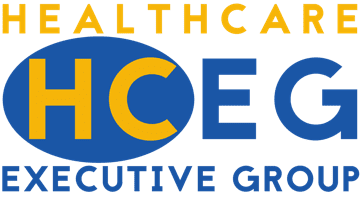
Adam Nelson – Vice President at NTT DATA, Inc
You may have seen on television commercials that a particular retail and credit card bank wants to know, What’s in your wallet? This question and the drive toward being top of wallet is a customer relationship management (CRM) theme that the financial industry has been focused on for decades. The intent is to drive consumers to use their credit card the most and become your bank for other services, from checking and savings accounts to auto and home loans. So, open your wallet and take a look inside. What do you see? Is it American Express, Target, or Capital One? Is it your driver’s license? Regardless of what card you see first, one thing is for certain, it was not your healthcare insurance card.
The financial industry knows how to create stickiness with its consumers attract them young via their first savings or checking account (pre-collegiate years) and then give them a credit card when they turn 18. They, then have a profitable consumer for life, which averages between 14 – 22 years in the banking industry and spans auto and home loan up-sell opportunity. However, for a healthcare insurance company, consumer stickiness, or top of wallet mindset, has been traditionally based on a once a year enrollment event or a quick scan of an Explanation of Benefits letter after a preventive or acute event (annual exam or hospital visit). This depicts an extreme lack of stickiness with a healthcare consumer, which the health plan desperately needs to have, but never considered prior to the healthcare event or as a primary focus on health management and wellness programs.
This last concept is an interesting one diet plans emerged in the 60’s with Weight Watchers, followed by Atkins in the 70’s, evolved to the 80’s era of Let’s Get Physicalgym memberships and where did we end up? With an obesity epidemic in America and abroad popularized by a shift in dining habits (eating out and eating faster), longer working hours (translating into less time for exercise) and a notable upswing in detrimental ingredients like sodium and sugar. All combined, these factors have contributed to an increase in chronic conditions that we all know; diabetes, heart disease, hypertension and the list goes on.
Now, we are entering an era of consumer directed health whereby individuals have more options, yet also want a better experience in what is being distributed as a more self-service model. So, how does a health plan create an ecosystem that is attractive to new customers (price driven), sticky (to increase retention), self-serving (cost effective), and helpful (quality of care with tangible positive outcomes)
Almost every health care insurer has some sense of a program that at the core resembles the start of a digital business similar to how retail has adopted an Omni-channel approach. In this approach, the intent is for the experience to be as similar as possible across any channel, be it in-person, phone, web or mobile, with the most significant outcome being the end state. The single qualifying question should be can the consumer do what they want across all channels; can they try, buy, return and rate and have a positive, familiar experience that drives recurring visits.
With a health plan, the same approach could be used and it is suggested that all the data and channels are in place or available today. The question to ask then is, How easy is it for an employer group or individual member (potential or existing) to shop, buy, use, and understand their benefits and all associated information from financial (FSA, HSA and maximums) to clinical (can I view my own trending lab and radiology results and vitals from multiple doctors) to prescriptions (what kind, how long, what was result) The answer is that while the data does exist, the information is not user friendly to view and therefore, no stickiness is generated between am employer or member and the health plan. In the end and with the push for consumerism, health plans, it could be argued, are almost driving too hard to the hoop for the proverbial silver bullet of a self-service, care-about-my-own-health, and know-what-to-do model.
Push the decision to visit a doctor, or any medical facility (ER, urgent care) based on funds in an HSA too hard and folks might begin to think financially instead of based on health. Shift from a $20 co-pay for a chiropractic visit to a pay-as-you-go until your deductible is met, and folks might not seek out or even research preventive care options. Sweep obesity under the rug because you only visit a doctor once a year for the free visit and there might not be multiple opinions pushing you with the cold, hard truth to change your habits or else. The balance is a fine line yet can be met with a few straightforward lessons drawing from retail, banking, and even some common sense
- Ease of Information Make it simple and visually appealing
- Person to Person Connection Make it easy to get past IVR and talk to a knowledgeable representative
- Interpret my Information Make it fast to view and highlight relevant information to me, typically financials and benefits
- Help Consumers Make Decisions help me to find the right healthcare when I need it! Whether the reason is preventive or immediate, think about the consumer experience. If someone calls at 2AM local time, chances are they need a nurse, not an IVR.
With the digital experience, consumerism and the ecosystem of data upon us, health plans that thrive will find ways to attract, retain and both qualitatively and quantitatively support their members and customers data is at the core; using it has been a decades old initiative and finally, the business processes and technology exist with suitable price points for health plans to become top of wallet.
NTT DATA welcomes you to read more at The Outsourcing Center in the article, The Shift to a Patient Centric Healthcare Ecosystem: Changing Minds, Medicine and Marketing
Adam Nelson is a Vice President at NTT DATA, Inc. Adam leads the Healthcare and Life Sciences Solution Offerings group focused on productizing service capabilities to bring predictable and relevantbusiness change to clients. Adam’s background in Industrial and Organizational Psychology helps tobring accelerated decision making and behavior change to complex enterprise programs; he has beenpublished and interviewed by Computerworld, Corporate Board Member Magazine, and Oracle’s Profitmagazine on the topics of IT Governance, Compliance, the IT / Business relationship, and Program Management.



